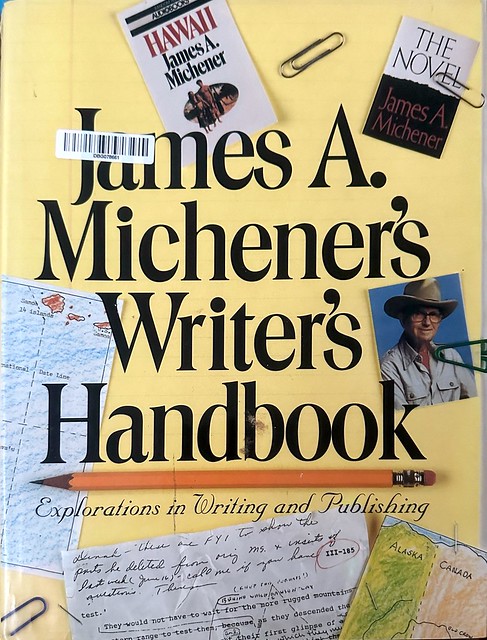3 minutes estimated reading time
Late on in his writing career a bestselling author created James A Micheners Writers Handbook. Now the stuff of thrift shops and the ‘for sale’ trolley in your local library, Michener was a bestselling author for over four decades. His paperback books were the size of doorstops, yet were sold in every airport for holiday reading.
At the end of the first Gulf War, George W. Bush quoted one of Michener’s short stories in a celebration of the allied military effort. If you have ever watched the musical South Pacific, that was an adaption of Michener’s first book ‘Tales of the South Pacific‘. Ten of his works were adapted for film by Hollywood and there were a further five TV series or ‘mini-series’.
Michener died in 1993, but during his life time his books sold an estimated 75 million copies worldwide. There was a distinctive Michener fingerprint to his books:
- Geography was at the route of everything, the setting was the hero of his books
- Deep research: Michener would research the culture, history and geology of the setting
- A common narrative rhythm to his writing
- Despite running to 1,000+ pages, Michener’s books were easy to read
The writer’s handbook
James A Micheners Writers Handbook talks through the process that Michener went through in writing a couple of his works. He talks about using a cut-and-paste methodology, where he physically cut and pasted in paragraphs on to typed sheets. He discusses the move from hot metal typesetting to phototypesetting and its effect on the editorial process.
Michener’s career saw him move his writing process from mechanical typewriter to word processor and he discusses how this became beneficial to his writing style.
Michener shows the feedback that he received from the publisher, the editor and even legal review – laying open how once the original draft is submitted to the publisher, creating a novel then becomes a team sport. And that’s even before marketing gets involved.
This is all laid out including photographs of original manuscript pages and proofing copies in a coffee table book.
Creating an easy-to-read books was deceptively hard work. The refining process that Michener went through reminded me of creating propositions for a creative brief in my day job.
At the back of the book is his advice for future writers in terms of paths to getting published. He admitted that getting published had become much harder for a number of reasons:
- The opportunities to showcase your writing had diminished due to the demise of short story publications
- Publishers now relied on agents to filter manuscripts on their behalf
- Writing courses were considered a par for the course
- Michener recommended a number of careers to kickstart a writing career including working in public relations rather than journalism – which surprised me
James A Micheners Writers Handbook won’t tell you how to create great stories, but it is a lesson in writing as a multi-stage process of creation, followed by refinement and further simplification of the language. Michener’s idea of simplification is still far more advanced than we write for today in business, in advertising copy or culture.
The book itself is a bit of a curate’s egg. I would recommend it, but not too sure about who I should recommend it to. More on the book here.
You can find more book reviews here.
